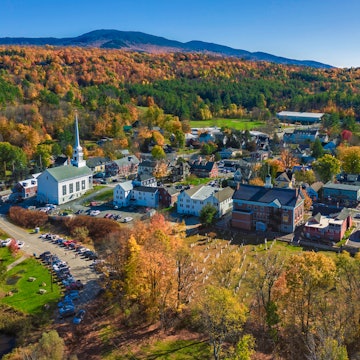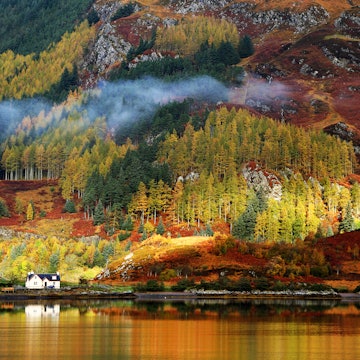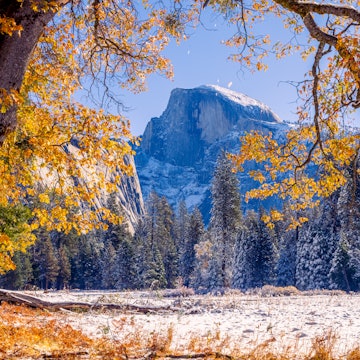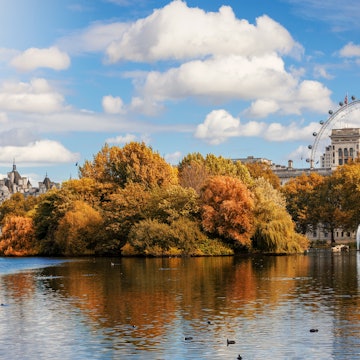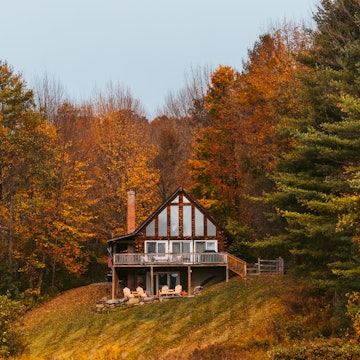

Enjoying the expansive view of one of the US' newest national parks: New River Gorge, West Virginia. Brian Evans / Getty Images
As a silver lining to what was a very cloudy 2020, the United States announced the latest addition to its "Best Idea." On December 27, 2020, West Virginia's New River Gorge became the state's first national park and the nation's 63rd.
Now there is one more good reason to see the USA's greatest outdoors. And while you’re probably familiar with some of the more popular national parks – namely Great Smoky Mountains, Grand Canyon, Yellowstone and Yosemite – you might not know about the 12 newest national parks and where to find them.
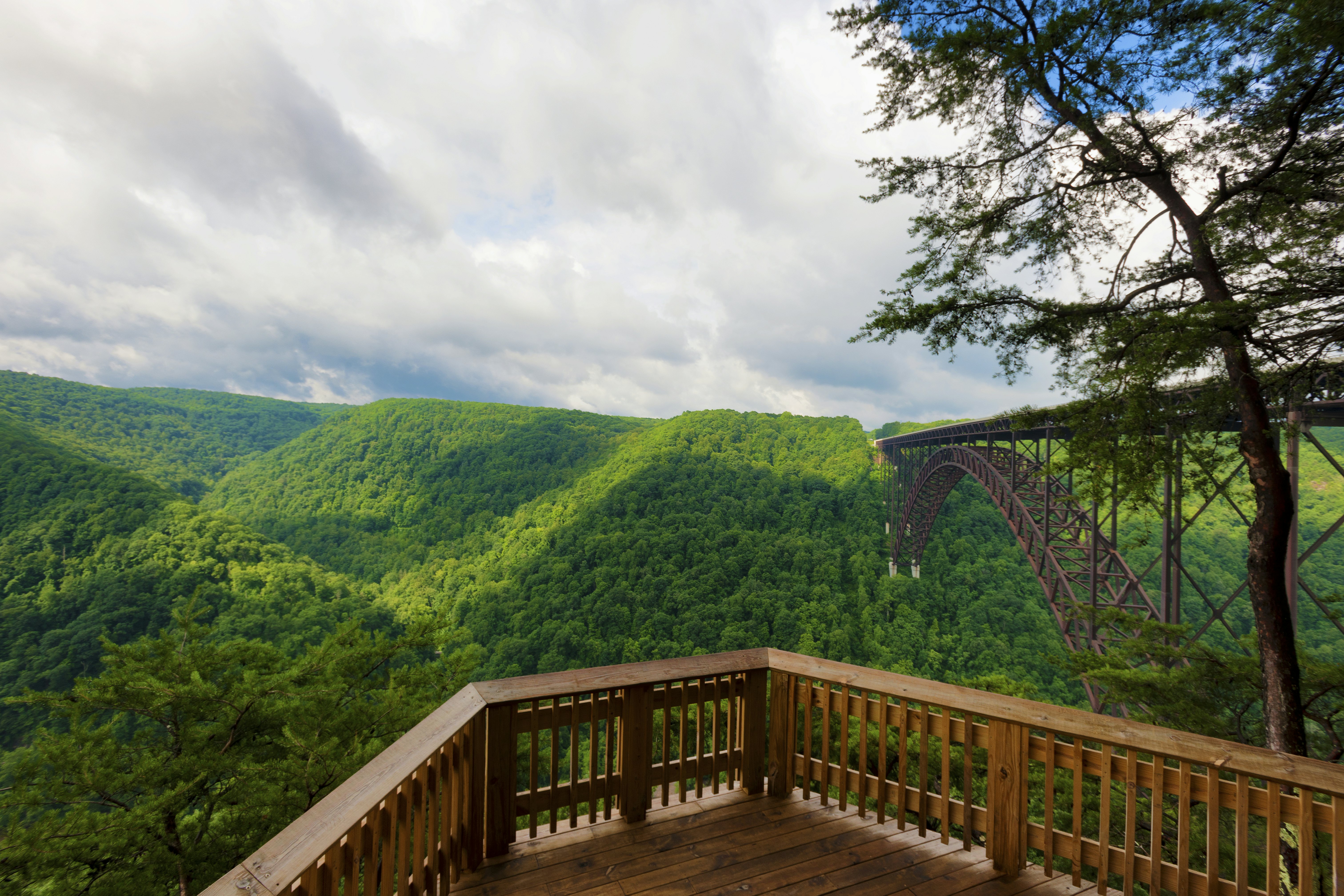
New River Gorge – West Virginia
Became a National Park in: 2020
West Virginia is often overlooked by travelers in the US. That's too bad, because it's one of the most beautifully rugged states in the country, and with national parks like New River Gorge National Park and Preserve (colloquially called "the New"), we're certain more travelers are going to explore the Mountain State.
The New River Gorge has 53 miles of whitewater rafting opportunities, including an action-packed 13-mile stretch of Class IV and V rapids, as well as a network of mountain bike trails stretching more than a dozen miles. Rock climbers can scramble up sheer limestone cliffs on more than 1500 routes.
Must see: Once a hive of the coal mining industry, the New is also an outdoor museum of the people who lived and worked there through the 18th and 19th centuries, supplying the lumber and coal that fueled American industry. Among those people were the Black coal miners and rail workers whose lives are recounted on a scenic drive through the national park.
The 6 best hikes in West Virginia

White Sands – New Mexico
Became a National Park in: 2019
New Mexico's White Sands have long been a stop on any landscape photographer's itinerary for their otherworldly hues, especially at sunrise or sunset. The gypsum dunes shift from hot orange to bright white to cool lavender as the day turns to night. Visitors can go backcountry camping among the glistening dunes, or check out the area's rich flora, like the super weird soaptree yucca, in the Native Plant Garden. In the evening, rangers lead sunset strolls, full-moon hikes and meteor shower watching parties.
Must see: The powdery white sands are perfect for sledding. Barrelling down the side of a dune in a plastic snow-saucer (for purchase at the gift shop) is a top activity at White Sands.
"Once they’re damaged, they’re gone:" How you can help protect petroglyphs in US national parks

Indiana Dunes – Indiana
Became a National Park in: 2019
Indiana Dunes is a decidedly urban park, replete with industrialized surroundings including a power plant, a steel mill and all of Gary, Indiana. You can see Chicago from across the lake, and while you probably won't need bear spray here, you will find incredible biodiversity that has made Indiana Dunes attractive to ecologists for over a century. The variety of flora and fauna here surprisingly rivals the state of Hawaii, and thanks to its city-adjacent location and its newly elevated status Indiana Dunes now sees almost the same number of visitors each year as such classics as Yellowstone and Yosemite.
Must see: The West Beach Trails feature the perfect mix of lake swimming, birding, wildflowers and views of Lake Michigan and Long Lake – all within a very doable 3.4-mile hike.
Under the radar USA: amazing architecture in Columbus, Indiana
Gateway Arch – Missouri
Became a National Park in: 2018
First protected as “Jefferson National Expansion Memorial in 1935” but more commonly called the St. Louis Arch for being smack dab in the middle of the city, Gateway Arch is utterly moving. From the towering arch and tram ride to the top to the newly constructed underground museum that honors the country’s complicated history of westward migration, there's a lot more to this controversial addition to the National Parks System than simple architecture, or even St. Louis' civic pride.
Must see: Riverboat cruises on the Mississippi are a great way to see the Gateway Arch from different perspectives while also enjoying a meal or live music.
Secret St Louis: 9 off-the-beaten-track sights in the Gateway City

Pinnacles – California
Became a National Park in: 2013
Thirty percent of the newest national parks are located in California, one of the most disproportionately beautiful and scenic states in the entire country. But Pinnacles had to wait a long time for its limelight. After being designated a monument in 1908, it didn’t become a National Park until 2013. Today, it’s known for its eroded spires, an extinct volcano and unusual talus caves – all products of the area's unique seismic history near the San Andreas Fault – as well as flora and fauna like endangered California condors. Just 80 miles from San Francisco, it's no wonder Pinnacles is popular for its excellent camping, hiking and rock climbing.
Must see: Birders will appreciate the Condor Gulch Trail, which is just shy of two miles to an overlook. Along the way, you might see some of the 200 different bird species that call this region home.
The best of California's amazing hikes
Great Sand Dunes – Colorado
Became a National Park in: 2004
At 750ft tall, Colorado’s Great Sand Dunes are the tallest in North America. Formed by centuries of erosion from the Sangre de Cristo and San Juan Mountains that's resulted in sediments becoming trapped in the valley between the two ranges and piled high by prevailing winds. That provides visitors with a unique opportunity to sandboard down steep dune peaks with snow-capped mountains in the background – an activity you won't find in many other places. First preserved as a national monument in 1932 until it became a national park in 2004, Great Sand Dunes don't attract the large crowds of other western parks like the Rockies. For those who do pay a visit, however, there's a lot of fun to be had with plenty of elbow room.
Must see: Playing in Great Sand Dunes National Park's Medano Creek is a nice way to cool off after sandboarding, as is off-roading the Medano Pass Primitive Road.
Top things to do in Colorado that are simply unmissable

Congaree – South Carolina
Became a National Park in: 2003
A southern swamp with strange root sculptures from giant old-growth cypress trees – that’s the best way to describe Congaree, which became a national park in 2003 after it was first protected as a National Monument in 1976, and designated as a Unesco biosphere reserve in 1983. Technically speaking, the 27,000-acre park isn’t really a swamp. Rather it’s a long-standing floodplain, one of the last examples of the old-growth bottomland hardwood forests that once covered the southeastern United States. Either way, Congaree is still a Southern Belle, especially with its popular boardwalk and canoe trails that wind through stands of loblolly pine, persimmon, water tupelo and bald cypress.
Must see: Instead of driving 30 minutes from Columbia, South Carolina to Congaree National Park, paddle and float your way on the Congaree Blue Trail. This 50-mile waterway runs from the West Columbia Riverwalk to the Bates Bridge landing in-park, with numerous put-ins and take-outs along the way.
Top 6 beaches in South Carolina
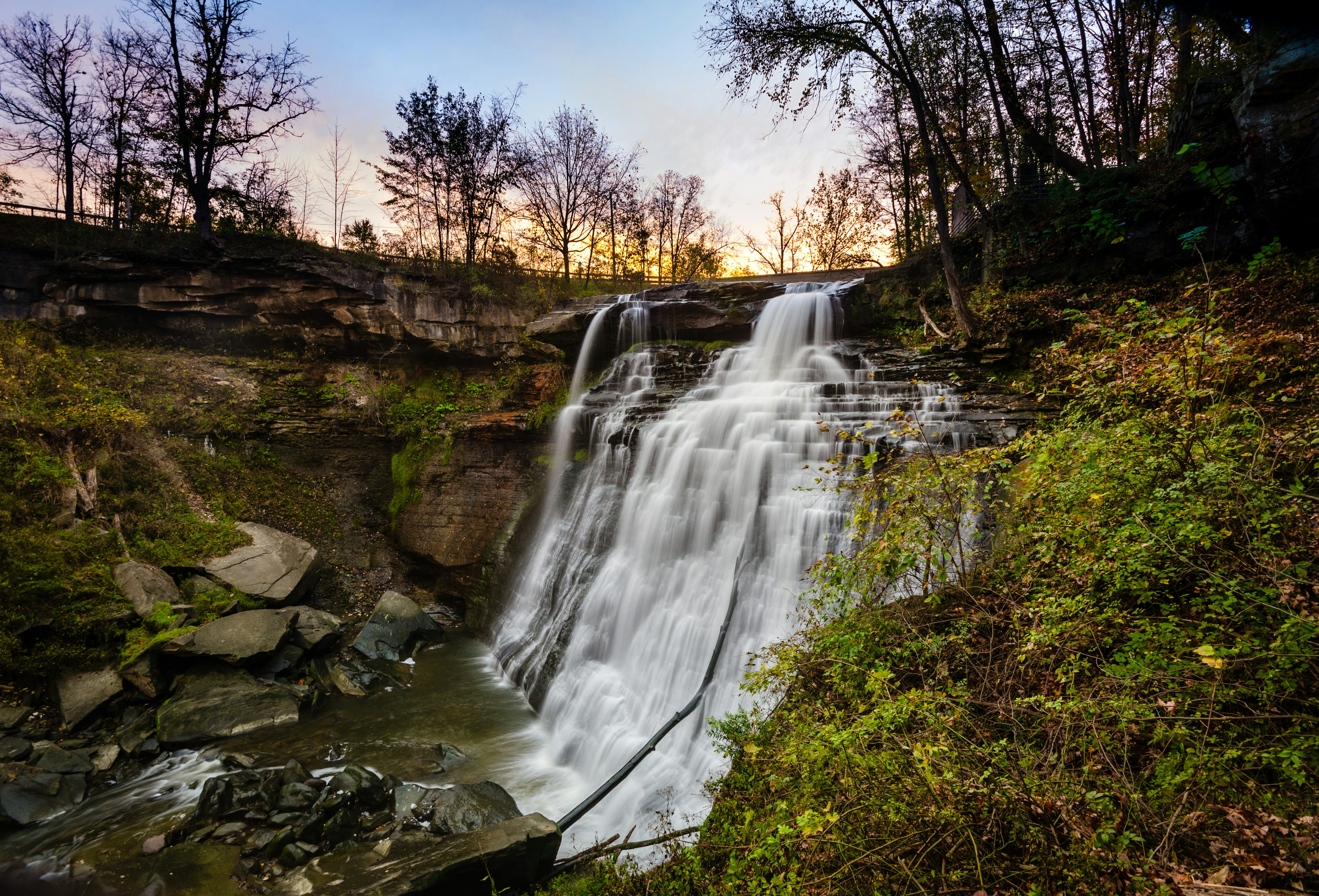
Cuyahoga Valley – Ohio
Became a National Park in: 2000
Although highly rated by regular visitors, Cuyahoga Valley is more of an urban oasis than a traditional national park. First designated a national recreation area in 1974 until it achieved park status in 2000, the sanctuary is admittedly peaceful and waterfall-filled. But given its proximity to both Cleveland and Akron, Cuyahoga is also crisscrossed by roads, city parks, private homes and other human developments that might disappoint those seeking truly untouched land. Some of those reminders of the region's former industrial heyday, though, are also what make it such a fun place for outdoor recreation – like hiking and biking the Ohio and Erie Canal Towpath Trail, for example.
Must see: The Cuyahoga Valley Scenic Railroad is a fun way to see the park, especially for families with small children. Cyclists and backpackers will also appreciate the ability to hop on the train with their gear after riding the Towpath Trail, rather than having to turn around and retrace their progress.
Experience the Great Lakes on one epic road trip

Black Canyon – Colorado
Became a National Park in: 1999
If vertically-challenged heroes from The Lord of the Rings ever descended into the depths of North America (instead of Middle Earth), it might look something like this. Officially known since 1999 as Black Canyon of the Gunnison National Park, the namesake rock walls drop a dizzying 2600ft below to the titular river. Stack the Empire State Building in New York atop the Willis Tower in Chicago, and you’d still be two stories short of the canyon rim. Wow.
Must see: The overlook at Warner Point, just a mile and a half down the trail, overlooks the deepest part of Black Canyon, which clocks in at 2722ft. Or you can drive the North Rim Road and stop at the Narrows View overlook to see how Black Canyon got its name – thanks to the knife-thin gouge the river has made over the centuries, just 40ft wide in some portions of the canyon, parts of the park get only 30 minutes of sunlight a day.
Introducing Colorado's National Parks

Death Valley – California
Became a National Park in: 1994
When George Lucas first directed the seminal Star Wars here in 1977, Death Valley was still a national monument, the second-highest status in that National Parks Service. Named by gold-rushers passing through in 1849, the great desert and hottest place on Earth carried its monument designation from 1933 until 1994, when it officially became a national park. Today it remains the driest and lowest place in North America, not to mention the hottest place on Earth with a 134-degree temperature recorded in the shade.
Must see: Badwater Basin is the lowest point on land in the western hemisphere at 277ft below sea level, and can be reached via a quarter-mile-long boardwalk from the Furnace Creek Visitor Center.
Stay in a luxury 'oasis' in California's Death Valley

Joshua Tree – California
Became a National Park in: 1994
First designated a National Monument in 1936 amid the Great Depression, Joshua Tree is known for its eponymous, Dr. Suess-like, and medusa-headed relative of the yucca. Once home to the Pinto people and named by Mormon pioneers who likened the tree limbs to outstretched praying arms. The park has inspired visitors ever since, including cultural luminaries like The Eagles, Gram Parsons, U2, Selena and Childish Gambino, all of whom have written songs about Joshua Tree, shot album artwork, or music videos here or otherwise celebrated a creative connection to the place.
Must see: Several whimsical roadside attractions are sprinkled just around the edges of Joshua Tree National Park. Those include the Integratron (a curiosity built by a UFOlogist that is now used for sound baths), a teeny tiny Crochet Museum, the Noah Purifoy outdoor museum and sculpture park and the Krblin Jihn Kabin (an art installation dedicated to an alternate reality that runs parallel to our world).
Getting to know Joshua Tree National Park
Saguaro – Arizona
Became a National Park in: 1994
The National Parks Service was on a roll in 1994, when Saguaro joined three other southwestern parks in becoming the latest to go national. Like Death Valley, the Saguaro-filled Sonoran desert was protected as a national monument in 1933 before becoming an official park. Later at the turn of the century, National Geographic named Saguaro the greatest of all national parks thanks to the millions of giant green cacti – some the tallest in the world at over 50ft and many of which live for 200 years – which stand as sentinels in an otherwise barren landscape. Hiking and driving among them are surreal, and at times they seem like they might even move.
Must see: The Signal Hill Petroglyph Trail is a beginner-friendly trail that will take you straight to hundreds of examples of rock art left by the indigenous people who once called Saguaro home.
Explore Arizona's natural beauty beyond the Grand Canyon on this epic road trip
You might also like:
The top 10 most visited national parks in the US
15 unforgettable experiences in US national parks
7 best US national parks to visit with kids








